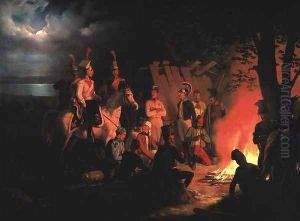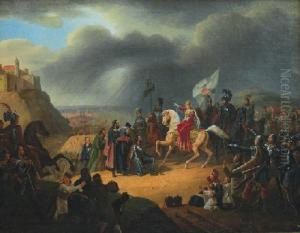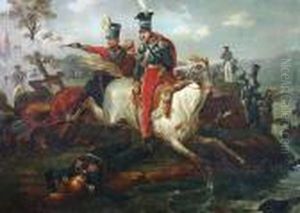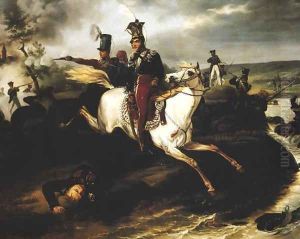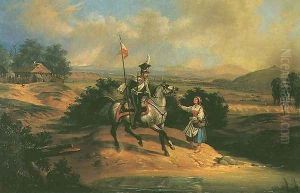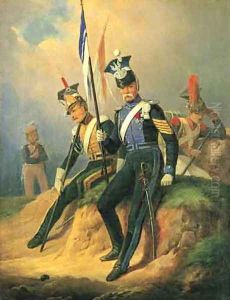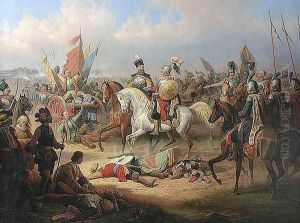January Suchodolski Paintings
January Suchodolski was a Polish painter and Army officer, born on September 19, 1797, in Grodno, then part of the Polish–Lithuanian Commonwealth and now in Belarus. He was a representative of the Polish Romantic period and was known for his depictions of military scenes, historical events, and his participation in the November Uprising of 1830-1831.
Suchodolski's early life was deeply influenced by the military. He began his military career as a cadet in the Polish Army and participated in the Napoleonic Wars, including the Moscow campaign of 1812. His firsthand experience with war and his passion for art naturally led him to specialize in battle scenes. After the fall of Napoleon, he continued his military service in the army of Congress Poland.
His interest in art led him to study painting under the guidance of renowned Polish artists such as Antoni Brodowski and Michał Stachowicz. Suchodolski's artistic talent was recognized early on, and he was eventually given the opportunity to attend the St. Petersburg Academy of Arts, where he further honed his skills.
Throughout his artistic career, January Suchodolski produced a vast number of works, including oil paintings, watercolors, and sketches. His works often depicted significant battles and military engagements, featuring Polish troops and heroes. His style was detailed and realistic, capturing the drama and chaos of the battlefield. Some of his most famous works include paintings of the Battle of Olszynka Grochowska, the Battle of Chocim, and scenes from the November Uprising.
In addition to battle scenes, Suchodolski also painted genre scenes, landscapes, and portraits. However, his military paintings are what garnered him the most acclaim, both in Poland and abroad. They served not only as artistic expressions but also as historical documents, providing a visual account of Poland's military history.
January Suchodolski's legacy is preserved in his works, which can be found in various museums and collections in Poland and other countries. He died on March 20, 1875, in Boimie, near Siedlce. His contributions to the Polish art scene of the 19th century and his unique blending of military experience with artistic talent continue to be celebrated to this day.
